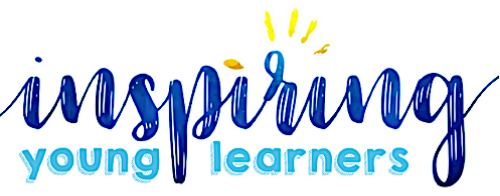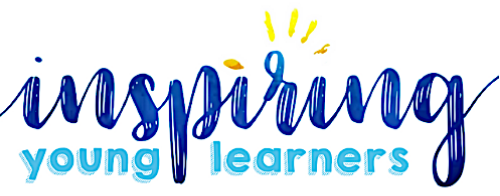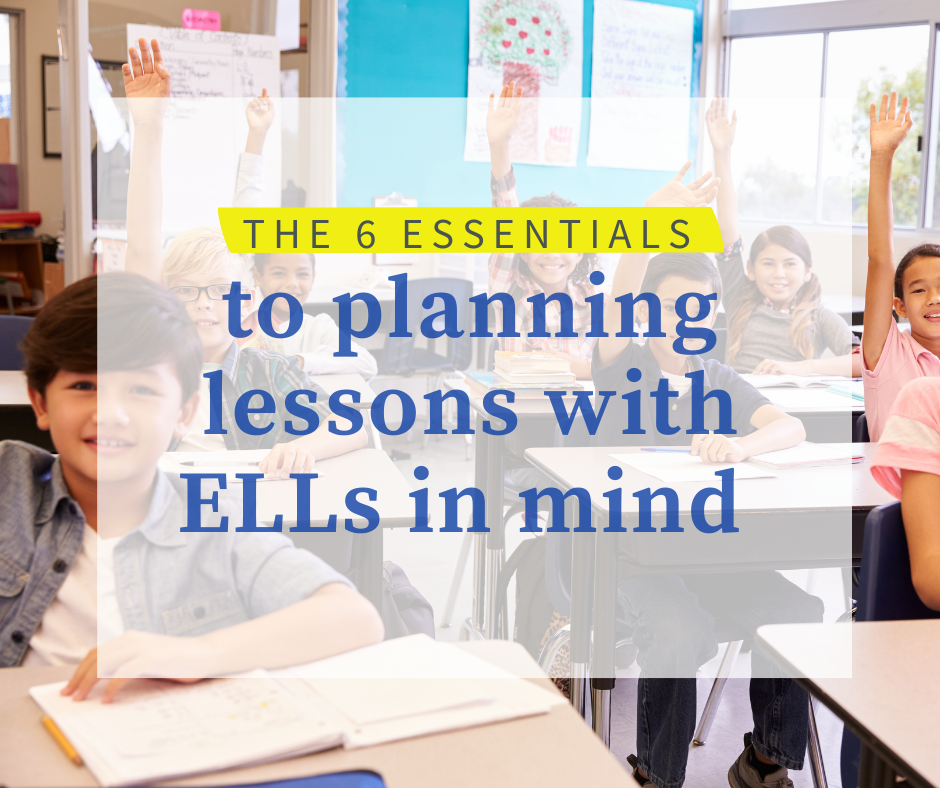
Let’s continue on with looking at how to make clear, impactful, and meaningful lessons to support all our learners.
A lot of you have told me you feel scattered during your lessons. I’m here to change that. When I became SIOP trained, I got a clear understanding of what skills my ELLs needed during lessons. This training, along with years of experience, has allowed me to create a framework of six essentials just for you to use in your lesson plans! The beauty of this plan is that you start at the top and work your way through–it will guide you each step of the way! (NOTE: It may take more than one lesson to cover all 6 parts.)
Step #1: Build background
Have you ever joined a conversation only to spend a few minutes trying to track with what they are talking about? This is what is happening to our ELL students when we don’t provide opportunities for them to be “clued in” to what the lesson is going to cover.
Step #2: Have clear language and content objectives.
For far too long I let writing language objectives stress me out, but they really are transformative to your students having a clear understanding of what they are supposed to do, and to help you stay on track with your lesson. Once I learned how to easily convert content objectives into language objectives I felt more confident in what language skills I needed to focus on, and my students felt more willing to take risks because they knew exactly what we were working on. Don’t get intimidated about language objectives, use them to your advantage! (We will go more in depth in a future post about how to convert your content objectives into language objectives soon.)
Step #3: Frontload vocabulary
How can you provide vocabulary before the lesson in a fun and engaging way? You could use pictures, a video, a story. Anything visual will help prepare their brain for the learning that is about to happen.
Step #4: Model content lesson
Model, model, model! Whatever you are expecting your students to do, make sure you show them first. Make “think alouds” a part of your daily routines.
Step #5: Conversation opportunities and support
You know the rule: Use it or lose it! If our students do not practice the language they are learning, they will forget it. Make sure they are talking with peers as much as possible through cooperative learning strategies.
Step #6: Practice and Application
Let’s push them to independence. We do not want them to be expecting scaffolds for life, so it is vital we daily give them opportunities to show what they know and to build confidence in their growth!
This was a very quick overview, but don’t worry, we will be going more in depth on each of the steps in the weeks to come!
I’d love to know, which of the 6 essential steps is the hardest for you to implement?



